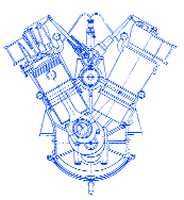Ludwig Martens
Ludwig Christian Alexander Karl Martens (or Ludwig Karlovich Martens; Russian: Людвиг Карлович Мартенс; 1 January [O.S. 20 December] 1875 − 19 October 1948) was a Russian Marxist revolutionary, Soviet diplomat and engineer.[1]
Biography
Early years
Ludwig Martens was born on 1 January 1875 n.s. in Bachmut, in the Yekaterinoslav Governorate of the russian Empire (present-day Ukraine). Ludwig's father, a German-born industrialist named Karl Gustav Adolf Martens, was the owner of a steel mill in Kursk, Russia. There were five sons and two daughters in the family. Two of them, Ludwig and Olga, became professional revolutionaries.[2]
In 1893 Martens graduated from a Kursk Realschule and entered Saint Petersburg State Institute of Technology, from which he graduated to become a mechanical engineer.[3]
Political career
While at the State Institute of Technology, Martens became acquainted with Vladimir Lenin and Julius Martov. Soon he became a member of an illegal Marxist group League of Struggle for the Emancipation of the Working Class.[2]
In 1896 he was arrested, and in 1899 as a German national was deported to Germany where he became a member of the Social Democratic Party of Germany. In 1902 he graduated from the Technical College of Charlottenburg. In 1906, following the failure of the 1905 Russian Revolution, Martens emigrated to Great Britain.[2]
In emigration Martens worked as a procurement agent for the Demidov Iron and Steel Works, purchasing machinery for the large industrial works, one of the largest steel works in Russia.[3]
In 1915, with the onset of World War I, the Kursk steel mill owned by Martens' family was confiscated by the Russian government because the Martens family were considered German nationals. In 1916 Martens emigrated to the United States where he worked as a vice president of the engineering firm Weinberg & Posner (New York City).[2]
In 1917, after the February Revolution, Martens – together with Leon Trotsky and 278 other Russian Social Democrats – returned from the United States to Russia on a steamship.[2]
In March 1919 Martens returned to the United States and founded the Russian Soviet Government Bureau, an informal embassy of Soviet Russia. He established commercial contacts (formally illegal as the USA boycotted Soviet Russia at the time) with more than one thousand American firms including such as Morgan Guaranty Trust Company of J. P. Morgan. He negotiated a loan with the then Irish Emissary to the United States, T.D. Harry Boland, using Russian jewels as security.[4] In June 1919 the Bureau was searched by police. In response to charges by the United States Department of Justice, Martens stated in Washington, D.C., on January 10, 1920, that he had done nothing to justify being deported. “My activities in the United States have been entirely friendly and along commercial lines,” he said.[5] After hearings in the United States Senate and the United States Department of Labor, Martens was finally deported to Soviet Russia in January 1921.[2]
Return to Russia
After returning to Russia, Martens became a member of the Supreme Soviet of the National Economy and the Chairman of Glavmetal (a state organization holding all the metallurgical enterprises of Soviet Russia). On that position Martens started works on developing the Kursk Magnetic Anomaly, the largest iron ore deposits in Russia.[2]
In 1924−26 Martens worked as the first Chairman of the Committee on Invention of the Supreme Soviet of the National Economy (Комитет по делам Изобретений; the Soviet counterpart of a Western Patent Office).[1] In 1925 he published a monograph, On the vibration of piston engines.[2]

In 1926−36 Martens worked as the Head of the Research and Development Institutes for Diesel Manufacturing (Научно-Исследовательский Институт Дизелестроения) in Leningrad. He was the author of the N-2 diesel (also known as the Martens Engine) intended as an aviation engine. The novel element of the diesel was that the 12-cylinder piston engine was aspired by a 6-cylinder piston air compressor. The diesel was tested in 1932.[6]
In 1927−41 he was the Chief Editor of the Technical Encyclopedia.[1] In 1933 Martens wrote a letter to OGPU in support of the arrested Pavel Florensky, he also took care of Florensky's sons, Vasily and Kirill.[2]
Death and legacy
Martens retired in 1941.[2] He died in Moscow on 19 October 1948 and was buried in Novodevichy Cemetery.[7]
During World War II the son of Ludwig Martens, Wilhelm Ludvigovich (Willy) Martens, was the head of the Free Germany committee intended to organize German POWs to fight alongside the Soviets against Axis troops. The committee was organized in Krasnogorsk in 1943. Later Wilhelm Martens worked as a Soviet intelligence officer.[2]
Footnotes
- Martens, Ludwig Karlovich article in Great Soviet Encyclopedia (in Russian)
- Biography of Martens (in Russian)
- "Consul of Russian Republic Her to Open Trade With U.S.; Authorized to Spend $200,000,000," New York Call, vol. 12, no. 80 (March 21, 1919), pp. 1-2.
- O'Keefe, Helene (2020-04-03). "How the Russian crown jewels went from the palaces of the Romanovs to Harry Boland's family home in Dublin". RTE. Retrieved 2020-05-16.
- United Press, “Soviet Leader Denies He Can Be Deported,” Riverside Daily Press, Riverside, California, Saturday 10 January 1920, Volume XXXV, Number 9, page 1.
- Авиационные Дизели, Или Тернистый Путь А.Д. Чаромского, Vladimir Kotelnkiov and Alexander Medved (in Russian)
- Ludwig Martens Archived 2006-02-11 at Archive.today article in the Encyclopedia of Kursk (in Russian)